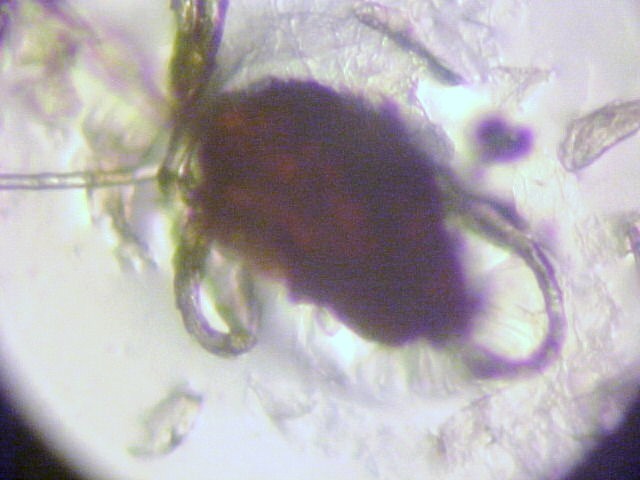Hydra Nematocyst Discharging On Skin
When at first, having had the all over itch, I used clear packing tape on my skin, to lift off whatever was causing the burn and itch sensations. Looking at pictures now, I believe this is a hydra nematocyst discharging! From right off my skin! In particular, this looks very like a tentacle of H. viridis. After firing off and stretching out, it also resembles the,"always there black hairs"...






Internet photo of Hydra viridis:

"An unusually elastic protein has been discovered in one of the most ancient groups of animals, the over 600-million-year-old cnidarians.
The protein is a part of the "weapons system" that the cnidarians use: a kind of harpoon launched from their body at extremely high speed.
The discovery of the hitherto unknown protein in the freshwater polyp Hydra suggests that the molecular mechanism of elasticity could have originated in the cnidarians and evolved to discharge a deadly weapon.
Due to the similarity of the protein's amino acid sequence to spidroin of spider silk, the researchers dubbed the elastic protein cnidoin.
In their experiments on the freshwater polyp Hydra, the research team of Assistant Professor Dr. Suat Özbek and Prof. Dr. Thomas Holstein at the Centre for Organismal Studies (COS) demonstrated that cnidoin is part of the cnidarian weaponry -- the stinging capsules. These organelles help jellyfish, corals and sea anemones capture prey and ward off enemies.
The researcher points out that the molecular mechanism of elasticity emerged several times in the animal kingdom, independently of each other. "From an evolutionary standpoint, however, cnidoin is oldest elastic protein reported so far," states Suat Özbek. "We therefore assume that this elasticity originated in the cnidaria and evolved as part of their 'weapons system'."
More prion info:
https://www.sciencedaily.com/releases/2015/01/150123110715.htm
http://www.ncbi.nlm.nih.gov/pubmed/20937891
http://www.jbc.org/content/279/50/52016.full








